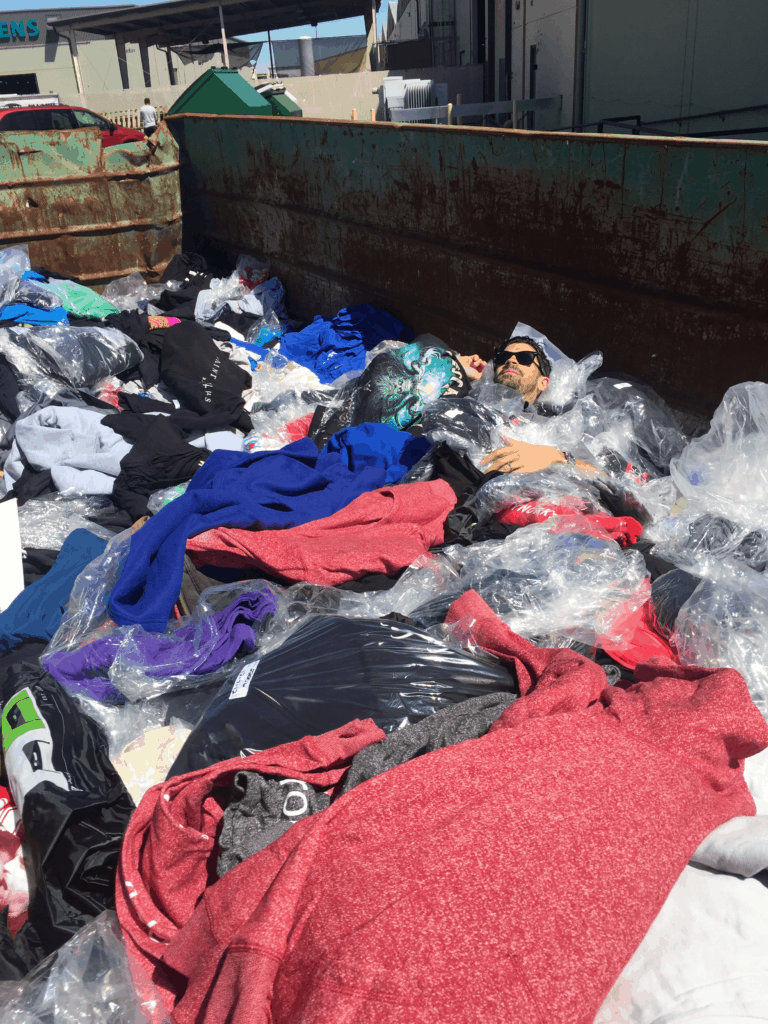As a followup to my recent post showing several pallets worth of accumulated mis-prints, I’d like to share a few points/answer a few questions:
First off, why do we save our mis-prints in the first place? Don’t we just turn them into test print material?
This has been addressed in a previous post titled “Spoilage Management”
Secondly, and I’m assuming you’ve read the “Spoilage Management” post, what do you do when you eventually have to get rid of those stored mis-prints?
Straight to the dumpster? No way, scavengers will have a field day and next thing you know you (or even your customer or their customer, trust me it’s happened) will be seeing printed shirts which never should have seen the light of day all over town. Not to mention, we had dumpsters full of product to purge so this was not a practicable option.
Donate to charity? Yes and no. In cases where we had larger quantities of a specific design (i.e. an entire print run was spoiled) we contacted our customers seeking their (and their customer’s) approval to donate to the charity of our/their choice. But, the majority off these mis-prints were comprised of the more typical, <2% spoilage from each print run. It just wasn’t practical to sort through all of these mis-prints and go through the approval process.
Rags?
With a fabric saw and about a weeks worth of labor we could have turned all of our mis-prints into an endless supply of rags which could have been used on press, but think about it, does fabric printed with plastisol ink really function well as a rag to wipe screen or equipment surfaces? No. Not to mention, they’re ugly and there are environmental concerns which I will address in a later post.
Solution?
Once we donated to charity what could be donated with customer approval, the most practical solution was, unfortunately, to send to a landfill. I’m sure with enough time we could have come up with a more environmentally-friendly solution but with consideration to time, cost, and the reality that we desperately needed to clear valuable space, it was the most practical solution. Of course the issue of security was addressed prior with the disposal company and they guaranteed that the disposal bin once picked up would be delivered to the landfill same-day, eliminating the concern of “scavengers”. We were able to load a 40-yard bin with misprints in the morning and by the afternoon it was picked up. This is in no way an ideal or final solution to what is an inevitable in high-volume screenprinting, but rather a way of addressing an issue at hand in the most practical and responsible means given current realities. It was also an excuse for a bit of rest in the midst of a busy day…



Comments